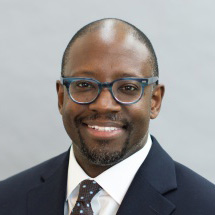 One of the things I never learned in my U.S. government courses in high school was just how quickly government agencies and programs grow without undergoing Congressional vetting. For example, I recently discovered that there exists a federally-funded White House Initiative on Historically Black Colleges and Universities (HBCU). When did that happen? How did that happen? In fact, a few days ago, the White House announced changes in the leadership of this initiative.
One of the things I never learned in my U.S. government courses in high school was just how quickly government agencies and programs grow without undergoing Congressional vetting. For example, I recently discovered that there exists a federally-funded White House Initiative on Historically Black Colleges and Universities (HBCU). When did that happen? How did that happen? In fact, a few days ago, the White House announced changes in the leadership of this initiative.
President Obama names two dynamic new leaders to head the White House Initiative on Historically Black Colleges and Universities (HBCUs). Dr. George Cooper will begin this week as the Initiative’s Executive Director, and Dr. Ivory Toldson will serve as Deputy Director. The task at hand for Dr. Cooper and Dr. Toldson is to lead a team, stretched across 32 federal agencies, corporate entities, and philanthropic organizations, to work together in strengthening the capacity of over 100 HBCUs, as they strive to shape this country’s next generation of leaders.
Since a large share of HBCUs are private schools, I am curious about why these schools deserve special attention from the President of the United States in ways that other historic coalitions of colleges do not. After looking at the Department of Education’s website for information I discovered that this is a tale of presidential executive orders.
It seems that this initiative sprung from President Jimmy Carter signing an executive order in 1980 that established a federal program “to overcome the effects of discriminatory treatment and to strengthen and expand the capacity of historically black colleges and universities to provide quality education.” The next year, President Ronald Reagan established the White House Initiative on Historically Black Colleges and Universities, setting “into motion a government wide effort to strengthen our nation’s HBCUs.” Eight years later in 1989, President George Bush signed an executive order establishing a Presidential Advisory Board on Historically Black Colleges and Universities “to advise the president and the secretary of education on methods, programs, and strategies to strengthen these valued institutions.” The Clinton presidency also played a major role in expanding the oversight and reach of the initiative with another executive order. Finally, on Feb. 12, 2002, President George W. Bush signed an executive order transferring the White House Initiative on Historically Black Colleges and Universities to the Office of the U.S. Secretary of Education. And there you have it.
In terms of funding, HBCUs receive about 4 percent of the nearly $120 billion the federal government gives to higher education through aid and research dollars each year. HBCUs also receive about $2.5 billion in Pell Grants. Because these schools tend to be small, HBCU students receive more taxpayer-funded aid per capita than students at non-HBCU colleges. Are these reparations? What is alarming about the funding disparity, however, is that even with increased funding since the Carter years, HBCUs remain among the lowest-performing schools in the country with an average graduation rate of 42 percent. Should we not be closing some of them if they are not graduating students?
With these numbers you have to wonder if there is more to the story. Why would the White House and the Department of Education commit to funding and maintaining an HBCU like Texas Southern University that only graduates 11 percent of its students? Given the low performance of these schools, you can not help but wonder if political pressure, election cycles, political favors, and the like have something to do with the continuation of the program. Whatever is going on behind the scenes, it is safe to say that presidential executive orders often plant seeds that expand government down the road. A small federal program formed in 1980 has now grown into a targeted Department of Education initiative supported by 32 additional federal agencies by 2013.

